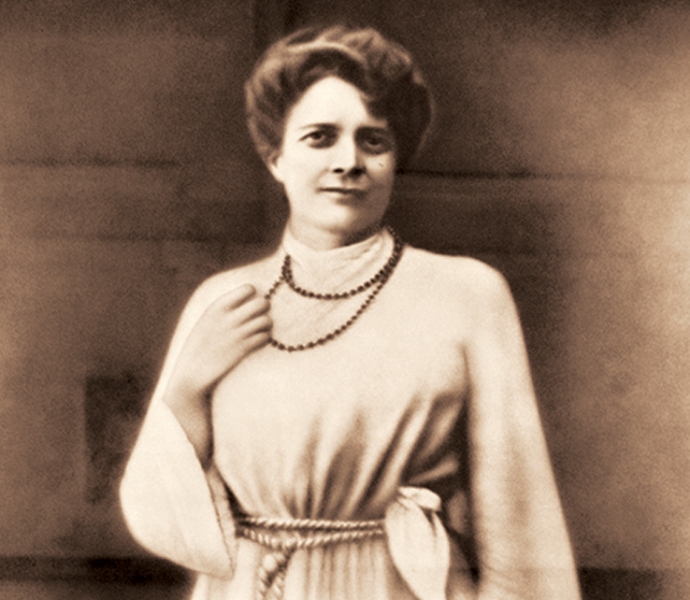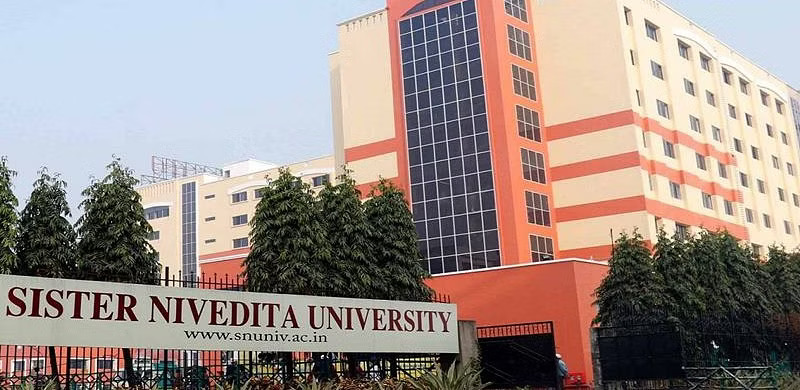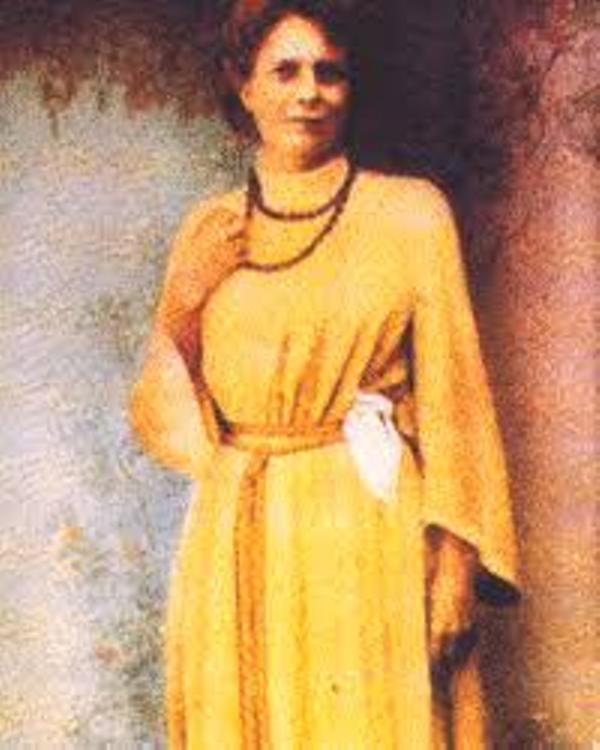Sister Nivedita Age, Death, Family, Biography
Quick Info→
Death Cause: Dysentery
Age: 44 Years
Death Date: 13/10/1911
Some Lesser Known Facts About Sister Nivedita
- Sister Nivedita’s father, Samuel Nobel, died in 1877 when she was only 10 years old.
- Following her father’s death, she returned to her grandfather, Hamilton’s home in Ireland along with her mother and two siblings.
- After her return, Sister Nivedita took a job as a teacher in London.
- She studied subjects like physics, arts, music, and literature at Halifax College.
- At the age of seventeen in 1884, she first started a career in teaching at a school in Keswick.
- She became a teacher at the age of 17 and was engaged to be married. But, her fiancé died before the marriage and she moved on.
- In 1886, she went to Rugby to teach in an orphanage.
- A year later, she took up a post in the coal-mining area of Wrexham in North Wales.
- She became a favorite writer and speaker at the Sunday Club and the Liverpool Science Club.
- In 1891, Margaret settled in Wimbledon and helped, Mrs. de Leeuw, to start a new school in London.
- After a year, in 1892, Margaret started her independent school at Kingsleygate.
- At her school, there were no restrictive set methods and formal learning. There, children learned through play.
- Margaret co-founded the Sesame Club, where she was noticed for her strong, progressive views on education by leading intellectuals like Thomas Huxley and W.B. Yeats.
- In November 1895, she met Swami Vivekananda for the first time, who had come from America for a lecture at Isabella Margesson’s residence at West End, London.
- She accepted him as her guru (spiritual teacher) before he left England in 1896 and worked for the Vedanta movement in England until she went to India in 1898.
- Nivedita told a friend in 1904 about her decision to follow Swami Vivekananda as a result of her meeting him in England in November 1895.
- She was a methodist at birth, however she converted to Hinduism after becoming a disciple of Swami Vivekananda.
- Swami Vivekananda deemed education to be the most important aspect of life and chose Sister Nivedita to educate Indian women. This led her to travel to India via a ship, Mombasa that travelled to Calcutta on 28 January 1898.
- After arriving in India, she became lifelong friends with Swami Vivekananda’s other two disciples; Sara C. Bull and Josephine MacLeod.
- Swami Vivekananda organized a public meeting at Star Theatre to introduce Sister Nivedita to the people of Calcutta. In his speech, Swami Vivekananda said, “England has sent us another gift in Miss Margaret Noble.”
- On 25 March 1898, at Nilambar Mukherjee Garden, Swami Vivekananda formally initiated Margaret in the vow of Brahmacharya (lifelong celibacy) and gave her the name “Nivedita” meaning the dedicated one.
- She gave her first public speech in India, at the Star Theatre, Calcutta, “Influence of the Spiritual Thoughts of India in England” in 1898.
- Nivedita spoke many historical lectures on ‘Kali and Her Worship’ at the Albert Hall on 13 February 1899, the ‘Young India Movement’ at the Minerva Theatre on 26 February 1899, ‘The Unity of Asia’, ‘Hindu Mind in Modern Science,’ ‘Indian Woman-hood’, ‘Indian Woman as she strikes an English Woman’, ‘How and Why I adopted the Hindu Religion’.
- On 26 March 1899, Swami Vivekananda made Sistet Nivedita, ‘’Naisthic’’ Brahmacharini of the Order.
- She also spoke Bengali, after having learnt from Swami Swarupananda.
- Nivedita authored books like The Master as I Saw Him and Notes on Some Wanderings with Swami Vivekananda, where she wrote about her experiences of her tour throughout India and with her master.
- She wrote another book called, Kali – The Mother, which influenced Abanindranath Tagore to paint Bharat Mata. Nivedita dedicated the book to Vireswar, Lord of the Heroes, meaning Vivekananda.
- Nivedita has written many books like The Web of Indian Life, Cradle Tales of Hinduism, Studies from an Eastern Home, and more.
- Sister Nivedita also wrote on many facets of Indian culture, philosophy, art, and history in journals like the Review of Reviews, the Prabuddha Bharata, the Modern Review, etc. under the byline `Nivedita of Ramakrishna-Vivekananda’.
- She called her master, Swami Vivekananda as the King and considered herself as his spiritual daughter.
- Nivedita wrote an inspiring and illuminating article for Hindus, “The National Significance of the Swami Vivekananda’s Life and Work”, after his passing.
- Nivedita established her first school at Bosepara Lane, Kolkata on 13 November 1898 on the day of Kali Puja, a Bengali festival, in the presence of Swami Vivekananda. The school was inaugurated by Sarada Devi and other disciples of Ramakrishna.
- Her school was only for women and had students like widows, female orphans, and more who could not study in most schools.
- Sister Nivedita played a crucial role during the plague epidemic in Kolkata in 1899, wherein she nursed and took care of poor people. he inserted appeals for help in the English Newspapers and requested financial support for her plague relief activities.
- Indian Mirror published her appeal for plague relief, ‘The Plague in Calcutta.’
- Nivedita established the “Ramakrishna Guild of Help” in America, supported by Besse Leggett of Ridgely Manor and Sara Bull.
- She was one of the five members of a Central Committee of Revolutionary Groups, formed under the leadership of Sri Aurobindo.
- She contributed vastly to the Indian Independence Movement by providing financial and logistical support, as well as leveraging her contacts to get information from government agencies to forewarn independence activists.
- She was instrumental in inspiring all of India’s scientists (e.g, Sir Jagadish Chandra Bose, Basiswar Sen), artists (like Abanindra Nath Tagore and Nandalal Bose), educationist (like Brajendra Nath Sil, Ramananda Chattopadhyay, Kumud Bandhu Sen), and above all freedom fighters (like Mahatma Gandhi, Rasbihari Ghosh, Gopal Krishna Gokhale, Arabinda Ghosh, Barin Chandra Ghosh, Bipin Chandra Pal).
- Sister Nivedita was a supporter of the Swadeshi Movement which called for the boycott of imported British goods in favour of domestically produced handmade goods
- She introduced the singing of the song Vande Mataram in her school as a prayer.
- Sister Nivedita was the first one to propose a design for the Indian national flag.
- She wrote the Introduction to the Complete Works of Swami Vivekananda, “Our Master and His Message.”
- On 26 January 1909, Nivedita’s mother passed away and she cremated her in the Indian traditional way.
- Soon after on 13 October 1911, she prepared her will in order to leave everything she possessed for the education of Indian women before dying due to dysentery.
- Sister Nivedita’s memorial is located below the Darjeeling Railway Station with the following words inscribed in her epitaph, “Here reposes Sister Nivedita who gave her all to India.”
- An educational institution in Chennai was named after her memory, The Sister Nivedita Academy. Several other schools and colleges have also been named after her.
- Rabindranath Tagore referred to her as the “Mother of the People”.
- Sir J.C. Bose founded his famous Institute for Research. In Nivedita’s memory, he installed the image of a woman stepping forward, lamp in hand.
- In 2017, the seventieth year after Indian Independence, English Heritage put up a blue plaque on the house in Wimbledon where Margaret Noble once lived in her honour. the year 2017 is also the 150th anniversary of her birth.
- Sister Nivedita’s biographies have also been written separately by Sahitya Academy award winner Shankariprasad Basu, India, and Lizel Rem from France.
- Nivedita played a major part in contemporary debates about Indian ‘national art’ and also collected Hindu and Buddhist stories
- She was writing at a time when modern Indian nationalism was emerging, and she herself played a significant role in fostering it.
- Nivedita was critical of an education that sought to teach a Bengali girl French or the piano;’ instead, she talked about the real education of Indian women as ‘enabling her to think about India,’ that would ‘make of her one with whom the world’s greatest minds [would be] proud to be associated.’
- She studied varied subjects like physics, music, literature, and arts and also read various religious books. She had also gained a reputation as a prolific writer in London. She developed her unique methodology of teaching.
- She also met Sarada Devi, wife of Ramakrishna, and became devoted to her.
- Sister Nivedita supported the Indian scientist Dr. J C Bose in his work. She helped him financially and also in getting recognition since he faced discrimination from the establishment.
- When Abala Bose fell ill abroad, Nivedita took all the responsibilities of her care and treatment as a loving sister of her own.
- 7th October. Nivedita understood that the time for the last journey was nearer and so the last duty must have been done soon. On her direction, the following ‘will’ was prepared will Mr. E.G.Thorp of Boston give to me or the care-taker of my property, the three hundred pound approximate money in my Bengal Bank account, my seven hundred pound share from the property of the wife of late Mr. Olli Bull, all the income from my all sold books and their copyright, these all I am giving to the trustee members of Swami Vivekananda ji’s math at Belur.’
- They will keep these as a permanent fund and according to the suggestions given by Miss Christine Greenstydle, will use those for educating the women of India in our national method.
- Margaret’s family had moved to Ireland from Scotland five centuries before her birth and are of Anglo-Saxon descent.
- Her grandfather John Noble was a Protestant minister in the Wesleyan Church in Northern Ireland.
- Her father was a shopkeeper in the small town of Dungannon. He gave up his business when Margaret was a year old, sold his house, and the family moved to England where Samuel enrolled as a theological student at the Wesleyan Church in Manchester.











